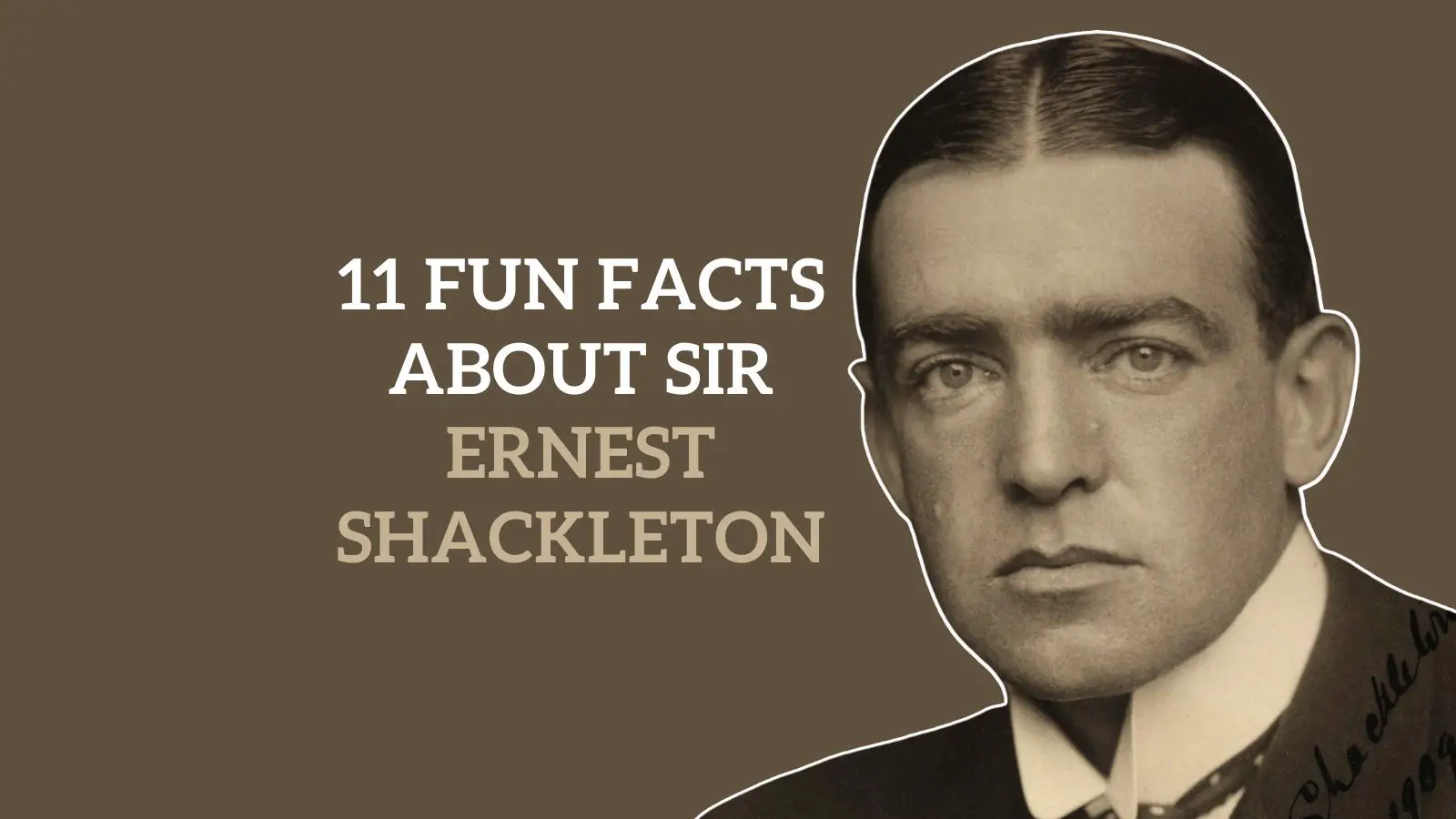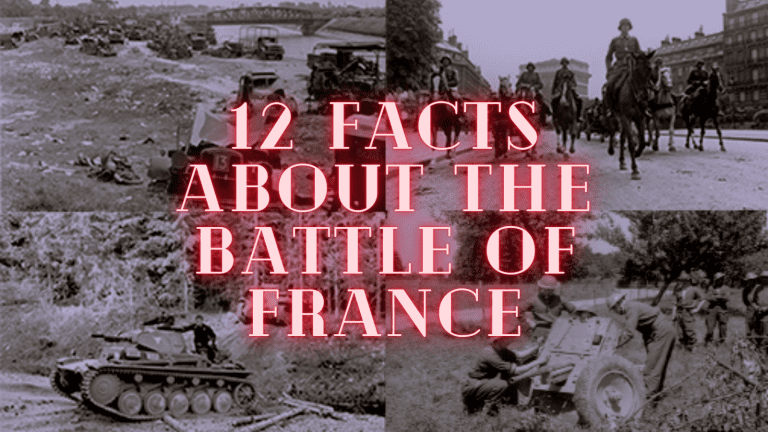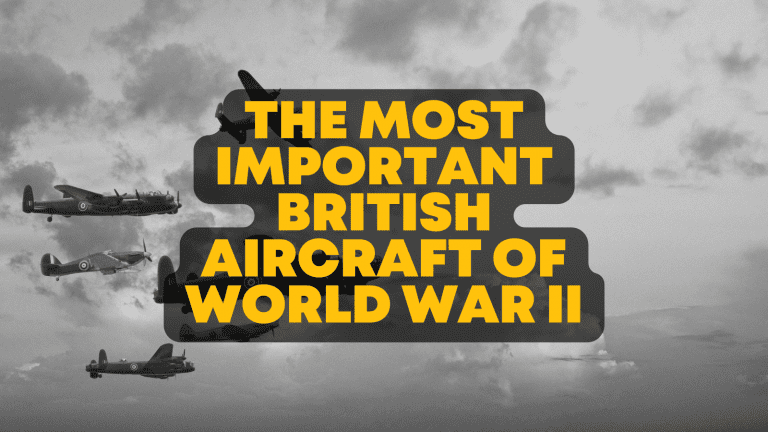11 Fun Facts About Sir Ernest Shackleton
Ernest Shackleton was an Irishman of English heritage (specifically from Yorkshire) born in Kilkea, County Kildare on the 15th of February 1874. His father, Henry was not permitted into the British Army as was his want due to poor health and took up farming instead, settling in Kilkea. Shackleton’s mother, Henrietta Letitia Sophia Gavan, was a descendant of the Fitzmaurice family. Ernest was their second child and oldest son, and he had nine siblings. His only brother, Frank, was a suspect in the 1907 theft of the Irish Crown Jewels. He was however exonerated but the stolen jewels are still at large.
In 1880, Ernest was six when his father left farming and moved them all to Dublin so that he could study medicine at Trinity College. Despite moving to Sydenham in suburban London four years later when he was ten for his father to take up practice as a newly qualified doctor, Ernest remained proud of his Irish roots, frequently declaring, “I am an Irishman”.
[/et_pb_text][/et_pb_column][/et_pb_row][et_pb_row _builder_version=”4.14.8″ _module_preset=”default” global_colors_info=”{}”][et_pb_column type=”4_4″ _builder_version=”4.14.8″ _module_preset=”default” global_colors_info=”{}”][et_pb_text _builder_version=”4.14.8″ _module_preset=”default” global_colors_info=”{}”]1. He was a Merchant Navy Officer
[/et_pb_text][/et_pb_column][/et_pb_row][et_pb_row _builder_version=”4.14.8″ _module_preset=”default” column_structure=”1_5,3_5,1_5″][et_pb_column _builder_version=”4.14.8″ _module_preset=”default” type=”1_5″][/et_pb_column][et_pb_column _builder_version=”4.14.8″ _module_preset=”default” type=”3_5″][et_pb_image src=”http://historywithhenry.com/wp-content/uploads/2022/03/1-7.jpg” _builder_version=”4.14.8″ _module_preset=”default” alt=”Sir Ernest Shackleton” title_text=”1″ hover_enabled=”0″ sticky_enabled=”0″][/et_pb_image][/et_pb_column][et_pb_column _builder_version=”4.14.8″ _module_preset=”default” type=”1_5″][/et_pb_column][/et_pb_row][et_pb_row _builder_version=”4.14.8″ _module_preset=”default” global_colors_info=”{}”][et_pb_column type=”4_4″ _builder_version=”4.14.8″ _module_preset=”default” global_colors_info=”{}”][et_pb_text _builder_version=”4.14.8″ _module_preset=”default” global_colors_info=”{}”]Young Ernest Shackleton was only16 when he was permitted to leave school to go to sea. Since he could not afford to either become a cadet in the Royal Navy at Britannia or join the mercantile marine cadet ships, he took up an apprenticeship “before the mast” on a sailing vessel. His first berth was aboard the square-rigged sailing ship Hoghton Tower, belonging to the North-Western Shipping Company. Over the four years that followed, he learned his trade at sea, sailing all across the world and meeting new and interesting people. In August 1894, he qualified as second mate and took a post as third officer on a tramp steamer of the Welsh Shire Line. Just two years on, he earned his title as first mate, and in 1898 was certified as a master mariner. He was thus duly qualified to take command of a British ship anywhere in the world.
In 1898 he was a young officer onboard the Union-Castle Line which was a regular mail and passenger carrier between Southampton and Cape Town. He swapped mail and passenger for troops after the Boer War broke out in 1899, and transferred to the troopship, Tintagel Castle. This is where in March 1900, he met Cedric Longstaff, an army lieutenant. Cedric’s father, Llewellyn W. Longstaff, was the financial backer of the National Antarctic Expedition that was being organised in London at the time.
Through his acquaintance with the son, he got an interview with Longstaff. So impressed was Longstaff by Shackleton that he put him forward to Sir Clements Markham, the expedition’s overlord. Shackleton was duly appointed as third officer to the expedition’s ship Discovery on the 17th of February 1901. His Merchant Navy service effectively ended on the 4th of June when he was commissioned into the Royal Navy as a sub-lieutenant in the Royal Naval Reserve.
[/et_pb_text][/et_pb_column][/et_pb_row][et_pb_row _builder_version=”4.14.8″ _module_preset=”default” global_colors_info=”{}”][et_pb_column type=”4_4″ _builder_version=”4.14.8″ _module_preset=”default” global_colors_info=”{}”][et_pb_text _builder_version=”4.14.8″ _module_preset=”default” global_colors_info=”{}”]2. Member of Captain Scott’s Discovery Expedition
[/et_pb_text][/et_pb_column][/et_pb_row][et_pb_row _builder_version=”4.14.8″ _module_preset=”default” column_structure=”1_5,3_5,1_5″][et_pb_column _builder_version=”4.14.8″ _module_preset=”default” type=”1_5″][/et_pb_column][et_pb_column _builder_version=”4.14.8″ _module_preset=”default” type=”3_5″][et_pb_image src=”http://historywithhenry.com/wp-content/uploads/2022/03/2-7.jpg” _builder_version=”4.14.8″ _module_preset=”default” alt=”Sir Ernest Shackleton” title_text=”2″ hover_enabled=”0″ sticky_enabled=”0″][/et_pb_image][/et_pb_column][et_pb_column _builder_version=”4.14.8″ _module_preset=”default” type=”1_5″][/et_pb_column][/et_pb_row][et_pb_row _builder_version=”4.14.8″ _module_preset=”default” global_colors_info=”{}”][et_pb_column type=”4_4″ _builder_version=”4.14.8″ _module_preset=”default” global_colors_info=”{}”][et_pb_text _builder_version=”4.14.8″ _module_preset=”default” global_colors_info=”{}”]The Discovery expedition, so named after the ship Discovery, was officially the British National Antarctic Expedition. Sir Clements Markham, president of the Royal Geographical Society, had taken many years to prepare the expedition which was his brainchild. Robert Falcon Scott, a Royal Navy torpedo lieutenant, led the expedition which included scientific and geographical objectives.
Scott ran the Discovery, both the ship and the expedition, along Royal Navy lines despite it not being a Royal Navy unit. Shackleton’s duties were listed as: “In charge of seawater analysis. Ward-room caterer. In charge of holds, stores, and provisions […] He also arranges the entertainments.”
Discovery sailed out of London on 31 July 1901, sailing via Cape Town and New Zealand to land at the Antarctic coast on 8 January 1902. Shackleton went on to participate in an experimental balloon flight on 4 February, as well as the first sledging trip from the expedition’s winter quarters in McMurdo Sound.
Scott showed his trust in Shackleton by selecting him to join him and Wilson on the expedition’s southern journey that would take them to the highest possible latitude in the direction of the South Pole. Although this march did not constitute a serious attempt on the Pole, attaining a high latitude was very important to Scott. They set out on 2 November 1902. A record Farthest South latitude of 82° 17′ was reached, despite the sledge dogs falling ill from tainted food, which significantly affected their performance. Not a single one of the 22 dogs survived the march. All three men suffered snow blindness, frostbite, and scurvy. Shackleton was unable to carry out his share of the work on the return journey, so seriously weakened was his condition. Wilson’s diary entry for 14 January reads: “Shackleton has been anything but up to the mark, and today he is decidedly worse, very short-winded and coughing constantly, with more serious symptoms that need not be detailed here but which are of no small consequence one hundred and sixty miles from the ship”.
The party reached the ship on 4 February 1903, and, after an inconclusive medical examination, Scott sent Shackleton home on the relief ship Morning. It has been suggested that Scott used ill-health as an excuse to remove Shackleton whose popularity he resented. The expedition’s second-in-command, Albert Armitage, later claimed that Scott had told the ship’s doctor, “if he (Shackleton) does not go back sick he will go back in disgrace.” Since all other members of the expedition had passed away, this could never be corroborated. Shackleton and Scott were friendly up until Scott published The Voyage of the Discovery in which he gave his account of the expedition. Following this, they were always publicly mutually respectful and cordial. Despite this public front, biographer Roland Huntford claims that Shackleton’s wounded pride required “a return to the Antarctic and an attempt to outdo Scott”.
[/et_pb_text][/et_pb_column][/et_pb_row][et_pb_row _builder_version=”4.14.8″ _module_preset=”default” global_colors_info=”{}”][et_pb_column type=”4_4″ _builder_version=”4.14.8″ _module_preset=”default” global_colors_info=”{}”][et_pb_text _builder_version=”4.14.8″ _module_preset=”default” global_colors_info=”{}”]3. Nimrod Expedition 1907–1909
[/et_pb_text][/et_pb_column][/et_pb_row][et_pb_row _builder_version=”4.14.8″ _module_preset=”default” column_structure=”1_5,3_5,1_5″][et_pb_column _builder_version=”4.14.8″ _module_preset=”default” type=”1_5″][/et_pb_column][et_pb_column _builder_version=”4.14.8″ _module_preset=”default” type=”3_5″][et_pb_image src=”http://historywithhenry.com/wp-content/uploads/2022/03/3-7.jpg” _builder_version=”4.14.8″ _module_preset=”default” alt=”Sir Ernest Shackleton” title_text=”3″ hover_enabled=”0″ sticky_enabled=”0″][/et_pb_image][/et_pb_column][et_pb_column _builder_version=”4.14.8″ _module_preset=”default” type=”1_5″][/et_pb_column][/et_pb_row][et_pb_row _builder_version=”4.14.8″ _module_preset=”default” global_colors_info=”{}”][et_pb_column type=”4_4″ _builder_version=”4.14.8″ _module_preset=”default” global_colors_info=”{}”][et_pb_text _builder_version=”4.14.8″ _module_preset=”default” global_colors_info=”{}”]On New Year’s day 1908, the Nimrod sailed from New Zealand’s Lyttelton Harbour, on the start of the British Antarctic Expedition. Scott insisted that Shackleton not use the McMurdo area as a base for this expedition. Because of this, he had to seek out winter quarters at either King Edward VII Land or the Barrier Inlet. The Discovery had briefly visited the latter in 1902.
The New Zealand government and the Union Steamship Company undertook to share the cost of the expedition. To save coal and costs, the steamer Koonya towed the Nimrod 2,655 km (1,650 miles) to the Antarctic ice. Abiding by his agreement with Scott, Shackleton arrived at the eastern sector of the Great Ice Barrier on 21 January 1908. They christened the area the Bay of Whales on arrival, finding hundreds of whales blowing and breaching in what was at the time a significantly expanded Barrier Inlet.
Finding both the Barrier Inlet and King Edward VII Land unsafe to establish a base, Shackleton reneged on his agreement with Scott and headed for McMurdo Sound. He based this on having no options for a known base nearby, unstable conditions, ice pressure, and coal shortage. His decision was fully supported by second officer Arthur Harbord who noted it as, “dictated by common sense”. Faced with weather delays after arriving at McMurdo Sound on 29 January, they established a base at Cape Royds, 39 km (24 miles) north of Hut Point. Shackleton’s demeanour however buoyed the men, and the party was in high spirits and well-focussed.
What was to be known as The Great Southern Journey – made up of Shackleton, Frank Wild, Eric Marshall, and Jameson Adams – set off on 29 October 1908. They reached a new Farthest South latitude of 88° 23′ S on 9 January 1909, only 180 km (112 miles) from the Pole. During this journey of discovery, they came upon the Beardmore Glacier and discovered the approximate location of the South Magnetic Pole. They were the first to sight and put foot on the South Polar Plateau and to ascend Mount Erebus, the most active Antarctic volcano. During most of their return journey to McMurdo Sound, they survived starvation on half-rations. Frank Wild lauded Shackleton sacrificing his one biscuit designated for the day to him when he was ailing. They made Hut Point in the nick of time to board the ship.
Shackleton received a hero’s welcome on his return to the United Kingdom. He published his expedition account, Heart of the Antarctic. Emily Shackleton mentioned how he commented about not reaching the Pole with, “a live donkey is better than a dead lion, isn’t it?”
[/et_pb_text][/et_pb_column][/et_pb_row][et_pb_row _builder_version=”4.14.8″ _module_preset=”default” global_colors_info=”{}”][et_pb_column type=”4_4″ _builder_version=”4.14.8″ _module_preset=”default” global_colors_info=”{}”][et_pb_text _builder_version=”4.14.8″ _module_preset=”default” global_colors_info=”{}”]4. Plans for the Imperial Trans-Antarctic Expedition 1914–1917
[/et_pb_text][/et_pb_column][/et_pb_row][et_pb_row _builder_version=”4.14.8″ _module_preset=”default” column_structure=”1_5,3_5,1_5″][et_pb_column _builder_version=”4.14.8″ _module_preset=”default” type=”1_5″][/et_pb_column][et_pb_column _builder_version=”4.14.8″ _module_preset=”default” type=”3_5″][et_pb_image src=”http://historywithhenry.com/wp-content/uploads/2022/03/4.jpg” _builder_version=”4.14.8″ _module_preset=”default” alt=”Sir Ernest Shackleton” title_text=”4″ hover_enabled=”0″ sticky_enabled=”0″][/et_pb_image][/et_pb_column][et_pb_column _builder_version=”4.14.8″ _module_preset=”default” type=”1_5″][/et_pb_column][/et_pb_row][et_pb_row _builder_version=”4.14.8″ _module_preset=”default” global_colors_info=”{}”][et_pb_column type=”4_4″ _builder_version=”4.14.8″ _module_preset=”default” global_colors_info=”{}”][et_pb_text _builder_version=”4.14.8″ _module_preset=”default” global_colors_info=”{}”]The British Imperial Trans-Antarctic Expedition departed British waters on 8 August 1914, led by Shackleton who went on to publish details of his new expedition. He also successfully raised the funds to finance the expedition, mostly through private donations although he did receive the equivalent today of £900,000 from the British government. He garnered much public interest in the expedition and inspired over 5,000 applicants wanting to participate. He employed unorthodox methods to ultimately select a crew of 56, twenty-eight on each ship.
The ship, Endurance, carried the main party into the Weddell Sea destined for Vahsel Bay from where Shackleton and six team members would cross the continent. Shackleton met the ship in Buenos Aires only on 27 September, having departed well after the ship disembarked from England. The ship, the Aurora, carried Captain Aeneas Mackintosh and his support team to McMurdo Sound on the opposite side of the continent. It was their duty to establish supply depots between the Great Ice Barrier and the Beardmore Glacier to assist Shackleton’s main party to complete their 2900-km (1,800-mile) cross-continental expedition.
[/et_pb_text][/et_pb_column][/et_pb_row][et_pb_row _builder_version=”4.14.8″ _module_preset=”default” global_colors_info=”{}”][et_pb_column type=”4_4″ _builder_version=”4.14.8″ _module_preset=”default” global_colors_info=”{}”][et_pb_text _builder_version=”4.14.8″ _module_preset=”default” global_colors_info=”{}”]5. The Loss of the Endurance
[/et_pb_text][/et_pb_column][/et_pb_row][et_pb_row _builder_version=”4.14.8″ _module_preset=”default” column_structure=”1_5,3_5,1_5″][et_pb_column _builder_version=”4.14.8″ _module_preset=”default” type=”1_5″][/et_pb_column][et_pb_column _builder_version=”4.14.8″ _module_preset=”default” type=”3_5″][et_pb_image src=”http://historywithhenry.com/wp-content/uploads/2022/03/5.jpg” _builder_version=”4.14.8″ _module_preset=”default” alt=”Sir Ernest Shackleton” title_text=”5″ hover_enabled=”0″ sticky_enabled=”0″][/et_pb_image][/et_pb_column][et_pb_column _builder_version=”4.14.8″ _module_preset=”default” type=”1_5″][/et_pb_column][/et_pb_row][et_pb_row _builder_version=”4.14.8″ _module_preset=”default” global_colors_info=”{}”][et_pb_column type=”4_4″ _builder_version=”4.14.8″ _module_preset=”default” global_colors_info=”{}”][et_pb_text _builder_version=”4.14.8″ _module_preset=”default” global_colors_info=”{}”]Endurance departed from South Georgia heading for Vahsel Bay via the Weddell Sea on 5 December. Deep in the Weddell Sea, conditions gradually deteriorated until Endurance became frozen fast in an ice floe on 19 January 1915. More than a month later, on 24 February, Shackleton ordered the ship’s routine to be abandoned and converted it instead to a winter station, realising the ship would remain stuck until spring. By September, having slowly drifted along with the ice northward, the ship’s hull took extreme pressure from the breaking and resultant movement of the ice with the advent of spring.
With all hopes dashed of the ship sailing back to Vahsel Bay once it was freed from the ice, by 24 October it was taking on water. The ship was abandoned lying at 69° 5′ S, 51° 30′ W, and it eventually slipped beneath the surface on 21 November 1915.
Making camp with the rescued equipment and supplies off the doomed ship, Shackleton and his party camped on a large, flat floe for going on two months. They held out the hope that the flow might drift the 402 km (250 miles) to Paulet Island and la cache of lifesaving stores. Attempts failed to march across the ice to this island, and they set up Patience Camp on another floe, which by 17 March had floated to within 97 km (60 miles) of Paulet Island. The island remained unattainable thanks to impassable ice, and when the flow broke in half on 9 April, the crew escaped in lifeboats.
The men reached Elephant Island in three lifeboats, 557 km (346 miles) from the sunken Endurance, after five traumatic days at sea. It had been 497 days since they had stood on solid ground. Shackleton went on to suffer frostbitten fingers after offering his mittens to photographer Frank Hurley after he had lost his at sea.
On 9 March 2022, the world heard that the Endurance had been found just 6.4 km (4 miles) from where it went down 107 years before. The wreck was found 3,000m (10,000 feet) below the water’s surface.
[/et_pb_text][/et_pb_column][/et_pb_row][et_pb_row _builder_version=”4.14.8″ _module_preset=”default” global_colors_info=”{}”][et_pb_column type=”4_4″ _builder_version=”4.14.8″ _module_preset=”default” global_colors_info=”{}”][et_pb_text _builder_version=”4.14.8″ _module_preset=”default” global_colors_info=”{}”]6. Rescue in the South Atlantic
[/et_pb_text][/et_pb_column][/et_pb_row][et_pb_row _builder_version=”4.14.8″ _module_preset=”default” column_structure=”1_5,3_5,1_5″][et_pb_column _builder_version=”4.14.8″ _module_preset=”default” type=”1_5″][/et_pb_column][et_pb_column _builder_version=”4.14.8″ _module_preset=”default” type=”3_5″][et_pb_image src=”http://historywithhenry.com/wp-content/uploads/2022/03/6.jpg” _builder_version=”4.14.8″ _module_preset=”default” title_text=”6″ alt=”Sir Ernest Shackleton” hover_enabled=”0″ sticky_enabled=”0″][/et_pb_image][/et_pb_column][et_pb_column _builder_version=”4.14.8″ _module_preset=”default” type=”1_5″][/et_pb_column][/et_pb_row][et_pb_row _builder_version=”4.14.8″ _module_preset=”default” global_colors_info=”{}”][et_pb_column type=”4_4″ _builder_version=”4.14.8″ _module_preset=”default” global_colors_info=”{}”][et_pb_text _builder_version=”4.14.8″ _module_preset=”default” global_colors_info=”{}”]Shackleton garnered assistance from the Chilean government to rescue the crew off of Elephant Island men. The Yelcho, a small seagoing tug from the Chilean navy under the command of Captain Luis Pardo, joined the British whaler Southern Sky to reach Elephant Island on 30 August 1916. Shackleton quickly evacuated all of the 22 men who had been isolated on the island for a total of four and a half months.
Three men of the Ross Sea Party were still cut off at McMurdo Sound after Aurora had been driven out to sea after breaking its mooring. After many months adrift at sea, the ship had returned to New Zealand. Shackleton sailed the Aurora from New Zealand to rescue castaways of the Ross Sea party. They had completed their mission to establish the depots despite the obstacles encountered and the loss of three of their party including their commander, Aeneas Mackintosh.
[/et_pb_text][/et_pb_column][/et_pb_row][et_pb_row _builder_version=”4.14.8″ _module_preset=”default” global_colors_info=”{}”][et_pb_column type=”4_4″ _builder_version=”4.14.8″ _module_preset=”default” global_colors_info=”{}”][et_pb_text _builder_version=”4.14.8″ _module_preset=”default” global_colors_info=”{}”]7. Shackleton Served in WW1
[/et_pb_text][/et_pb_column][/et_pb_row][et_pb_row _builder_version=”4.14.8″ _module_preset=”default” column_structure=”1_5,3_5,1_5″][et_pb_column _builder_version=”4.14.8″ _module_preset=”default” type=”1_5″][/et_pb_column][et_pb_column _builder_version=”4.14.8″ _module_preset=”default” type=”3_5″][et_pb_image src=”http://historywithhenry.com/wp-content/uploads/2022/03/7.jpg” _builder_version=”4.14.8″ _module_preset=”default” alt=”Sir Ernest Shackleton” title_text=”7″ hover_enabled=”0″ sticky_enabled=”0″][/et_pb_image][/et_pb_column][et_pb_column _builder_version=”4.14.8″ _module_preset=”default” type=”1_5″][/et_pb_column][/et_pb_row][et_pb_row _builder_version=”4.14.8″ _module_preset=”default” global_colors_info=”{}”][et_pb_column type=”4_4″ _builder_version=”4.14.8″ _module_preset=”default” global_colors_info=”{}”][et_pb_text _builder_version=”4.14.8″ _module_preset=”default” global_colors_info=”{}”]Europe was embroiled in the First World War by May 1917 when Shackleton got back to England. He volunteered for service despite being too old for conscription, his heart condition, and exacerbating fatigue following all he had been through. His many requests to go to the front in France went unheeded and he had taken up drinking quite heavily. He received an assignment in Buenos Aires In October 1917 to boost British propaganda in South America. He was not adequately qualified as a diplomat and failed to persuade Argentina and Chile to fight on the side of the Allies, returning home in April 1918.
Shackleton briefly established a British presence in Spitzbergen under the guise of a mining operation but may have had a heart attack en route, falling ill in Tromsø. When he was then appointed to take part in a military expedition to Murmansk, he had no alternative but to return home before leaving for northern Russia.
[/et_pb_text][/et_pb_column][/et_pb_row][et_pb_row _builder_version=”4.14.8″ _module_preset=”default” global_colors_info=”{}”][et_pb_column type=”4_4″ _builder_version=”4.14.8″ _module_preset=”default” global_colors_info=”{}”][et_pb_text _builder_version=”4.14.8″ _module_preset=”default” global_colors_info=”{}”]8. How did Shackleton Die?
[/et_pb_text][/et_pb_column][/et_pb_row][et_pb_row _builder_version=”4.14.8″ _module_preset=”default” column_structure=”1_5,3_5,1_5″][et_pb_column _builder_version=”4.14.8″ _module_preset=”default” type=”1_5″][/et_pb_column][et_pb_column _builder_version=”4.14.8″ _module_preset=”default” type=”3_5″][et_pb_image src=”http://historywithhenry.com/wp-content/uploads/2022/03/8.jpg” _builder_version=”4.14.8″ _module_preset=”default” alt=”Sir Ernest Shackleton” title_text=”8″ hover_enabled=”0″ sticky_enabled=”0″][/et_pb_image][/et_pb_column][et_pb_column _builder_version=”4.14.8″ _module_preset=”default” type=”1_5″][/et_pb_column][/et_pb_row][et_pb_row _builder_version=”4.14.8″ _module_preset=”default” global_colors_info=”{}”][et_pb_column type=”4_4″ _builder_version=”4.14.8″ _module_preset=”default” global_colors_info=”{}”][et_pb_text _builder_version=”4.14.8″ _module_preset=”default” global_colors_info=”{}”]It had always been Shackleton’s quest to go to the Arctic on an expedition financed by private individuals and the Canadian government. When these financiers backed out, John Q. Rowett, a British businessman and Shackleton’s erstwhile school friend took up the reins. Since it was too late for the Arctic season, they proposed instead a two-year Antarctic expedition and the exploration of a few little-known sub-Antarctic islands. Their ship was a former Norwegian sealer, the Quest, a small 125-ton ship that was poorly fitted and known to be unusually uncomfortable for its sailors.
Shackleton suffered another suspected heart attack during the Quest Shackleton – Rowett Expedition of 1921 to 1922. On his arrival in Rio de Janeiro aboard the Quest, he refused a medical examination and continued south, arriving at South Georgia on 4 January 1922. Early the following morning, Shackleton summoned Alexander Macklin, the expedition’s physician, to his cabin, complaining of back pains and certain discomforts. Macklin suggested he give up alcohol, and only moments later, Shackleton suffered a fatal heart attack at 2:50 a.m. on 5 January 1922.
Macklin ruled the cause of death as atheroma of the coronary arteries exacerbated by “overstrain during a period of debility”. While repatriating his body to Britain, they received Emily Shackleton’s request for her husband to be buried in South Georgia. On 5 March 1922, Shackleton was laid to rest in the Grytviken cemetery in South Georgia. Macklin wrote in his diary: “I think this is as ‘the Boss’ would have had it himself, standing lonely in an island far from civilisation, surrounded by stormy tempestuous seas, and in the vicinity of one of his greatest exploits.”
The diaries of Eric Marshall, the medical officer to the 1907–09 expedition, suggest Shackleton suffered from a hole in the heart, a congenital heart defect.
Frank Wild’s ashes were interred on the right-hand side of Shackleton’s gravesite in Grytviken on 27 November 2011 under this inscription: “Frank Wild 1873–1939, Shackleton’s right-hand man.”
[/et_pb_text][/et_pb_column][/et_pb_row][et_pb_row _builder_version=”4.14.8″ _module_preset=”default” global_colors_info=”{}”][et_pb_column type=”4_4″ _builder_version=”4.14.8″ _module_preset=”default” global_colors_info=”{}”][et_pb_text _builder_version=”4.14.8″ _module_preset=”default” global_colors_info=”{}”]9. Shackleton’s Union Jack in the Ballroom of Sandringham House
[/et_pb_text][/et_pb_column][/et_pb_row][et_pb_row _builder_version=”4.14.8″ _module_preset=”default” column_structure=”1_5,3_5,1_5″][et_pb_column _builder_version=”4.14.8″ _module_preset=”default” type=”1_5″][/et_pb_column][et_pb_column _builder_version=”4.14.8″ _module_preset=”default” type=”3_5″][et_pb_image src=”http://historywithhenry.com/wp-content/uploads/2022/03/9.png” _builder_version=”4.14.8″ _module_preset=”default” alt=”Sir Ernest Shackleton” title_text=”9″ hover_enabled=”0″ sticky_enabled=”0″][/et_pb_image][/et_pb_column][et_pb_column _builder_version=”4.14.8″ _module_preset=”default” type=”1_5″][/et_pb_column][/et_pb_row][et_pb_row _builder_version=”4.14.8″ _module_preset=”default” global_colors_info=”{}”][et_pb_column type=”4_4″ _builder_version=”4.14.8″ _module_preset=”default” global_colors_info=”{}”][et_pb_text _builder_version=”4.14.8″ _module_preset=”default” global_colors_info=”{}”]When Shackleton’s expedition set off on the Imperial Transantarctic Expedition, King George V presented him with a red, white, and blue silk Union Jack Flag with a rope attached at one side. This Union Jack was flown at important points during the Endurance expedition to spur morale. When the expedition returned from the south on 30 May 1917, the flag was given back to the King. It was presented in a blue cardboard box with a leather label and an accompanying letter detailing the journeyings of the flag during the expedition and after its return to civilisation. It was used in World War I recruitment rallies in Australia before taking its place in the Ballroom at Sandringham, the Royal Family’s Norfolk retreat. Another Union Flag hangs in the same room. It was presented to Robert Falcon Scott on his attempt to reach the South Pole in 1910. Neither he nor his team returned from this expedition. Rescuers found the flag and returned it to his widow, who then returned it to Queen Alexandra.
These flags have become reminders of both great bravery and great tragedy.
[/et_pb_text][/et_pb_column][/et_pb_row][et_pb_row _builder_version=”4.14.8″ _module_preset=”default” global_colors_info=”{}”][et_pb_column type=”4_4″ _builder_version=”4.14.8″ _module_preset=”default” global_colors_info=”{}”][et_pb_text _builder_version=”4.14.8″ _module_preset=”default” global_colors_info=”{}”]10. Discovery of the Endurance
[/et_pb_text][/et_pb_column][/et_pb_row][et_pb_row _builder_version=”4.14.8″ _module_preset=”default” column_structure=”1_5,3_5,1_5″][et_pb_column _builder_version=”4.14.8″ _module_preset=”default” type=”1_5″][/et_pb_column][et_pb_column _builder_version=”4.14.8″ _module_preset=”default” type=”3_5″][et_pb_image src=”http://historywithhenry.com/wp-content/uploads/2022/03/10.jpg” _builder_version=”4.14.8″ _module_preset=”default” alt=”Sir Ernest Shackleton” title_text=”10″ hover_enabled=”0″ sticky_enabled=”0″][/et_pb_image][/et_pb_column][et_pb_column _builder_version=”4.14.8″ _module_preset=”default” type=”1_5″][/et_pb_column][/et_pb_row][et_pb_row _builder_version=”4.14.8″ _module_preset=”default” global_colors_info=”{}”][et_pb_column type=”4_4″ _builder_version=”4.14.8″ _module_preset=”default” global_colors_info=”{}”][et_pb_text _builder_version=”4.14.8″ _module_preset=”default” global_colors_info=”{}”]The Falklands Maritime Heritage Trust (FMHT) sponsored the search for the wreck of the ship Endurance. The search expedition enjoyed favourable conditions in the Weddell Sea which can be notoriously icebound.
The wreck was discovered by a team on board the South African polar research vessel Agulhas II on Saturday, March the 5th, 2022. Coincidentally on the hundredth anniversary of Ernest Shackleton‘s funeral in 1922. A robotic Saab Sabertooth hybrid underwater vehicle controlled by operators aboard the Agulhas II came upon the wreck. The discovery was made following more than two weeks of searching the predefined area based on Worsley‘s original sextant fixes.
The wreck of the Endurance is surprisingly well-preserved and is protected as a Historic Site and Monument under the Antarctic Treaty. As such, it is to remain undisturbed while it is being surveyed from the Agulhas II. “This is by far the finest wooden shipwreck I have ever seen,” said Mensun Bound, director of exploration for the Endurance22 expedition. “It is upright, well proud of the seabed, intact, and in a brilliant state of preservation. You can even see [the name] ‘Endurance’ arced across the stern.”
[/et_pb_text][/et_pb_column][/et_pb_row][et_pb_row _builder_version=”4.14.8″ _module_preset=”default” global_colors_info=”{}”][et_pb_column type=”4_4″ _builder_version=”4.14.8″ _module_preset=”default” global_colors_info=”{}”][et_pb_text _builder_version=”4.14.8″ _module_preset=”default” global_colors_info=”{}”]11. Quotes by Shackleton
[/et_pb_text][/et_pb_column][/et_pb_row][et_pb_row _builder_version=”4.14.8″ _module_preset=”default” column_structure=”1_5,3_5,1_5″][et_pb_column _builder_version=”4.14.8″ _module_preset=”default” type=”1_5″][/et_pb_column][et_pb_column _builder_version=”4.14.8″ _module_preset=”default” type=”3_5″][et_pb_image src=”http://historywithhenry.com/wp-content/uploads/2022/03/11.jpg” _builder_version=”4.14.8″ _module_preset=”default” alt=”Sir Ernest Shackleton” title_text=”11″ hover_enabled=”0″ sticky_enabled=”0″][/et_pb_image][/et_pb_column][et_pb_column _builder_version=”4.14.8″ _module_preset=”default” type=”1_5″][/et_pb_column][/et_pb_row][et_pb_row _builder_version=”4.14.8″ _module_preset=”default” global_colors_info=”{}”][et_pb_column type=”4_4″ _builder_version=”4.14.8″ _module_preset=”default” global_colors_info=”{}”][et_pb_text _builder_version=”4.14.8″ _module_preset=”default” global_colors_info=”{}”]“Difficulties are just things to overcome, after all.”
“Superhuman effort isn’t worth a damn unless it achieves results.”
“Through endurance we conquer.”
“Teachers should be very careful not to spoil their pupils’ taste for poetry for all time by making it a task and an imposition.”
“If I had not some strength of will, I would make a first-class drunkard.”
“I believe it is in our nature to explore, to reach out into the unknown.”
“The only true failure would be not to explore at all.”
“A man must shape himself to a new mark directly the old one goes to ground.”
“Loneliness is the penalty of leadership, but the man who has to make the decisions is assisted greatly if he feels that there is no uncertainty in the minds of those who follow him and that his orders will be carried out confidently and in expectation of success.”
“Need to put footstep of courage into stirrup of patience.”
[/et_pb_text][/et_pb_column][/et_pb_row][/et_pb_section]





